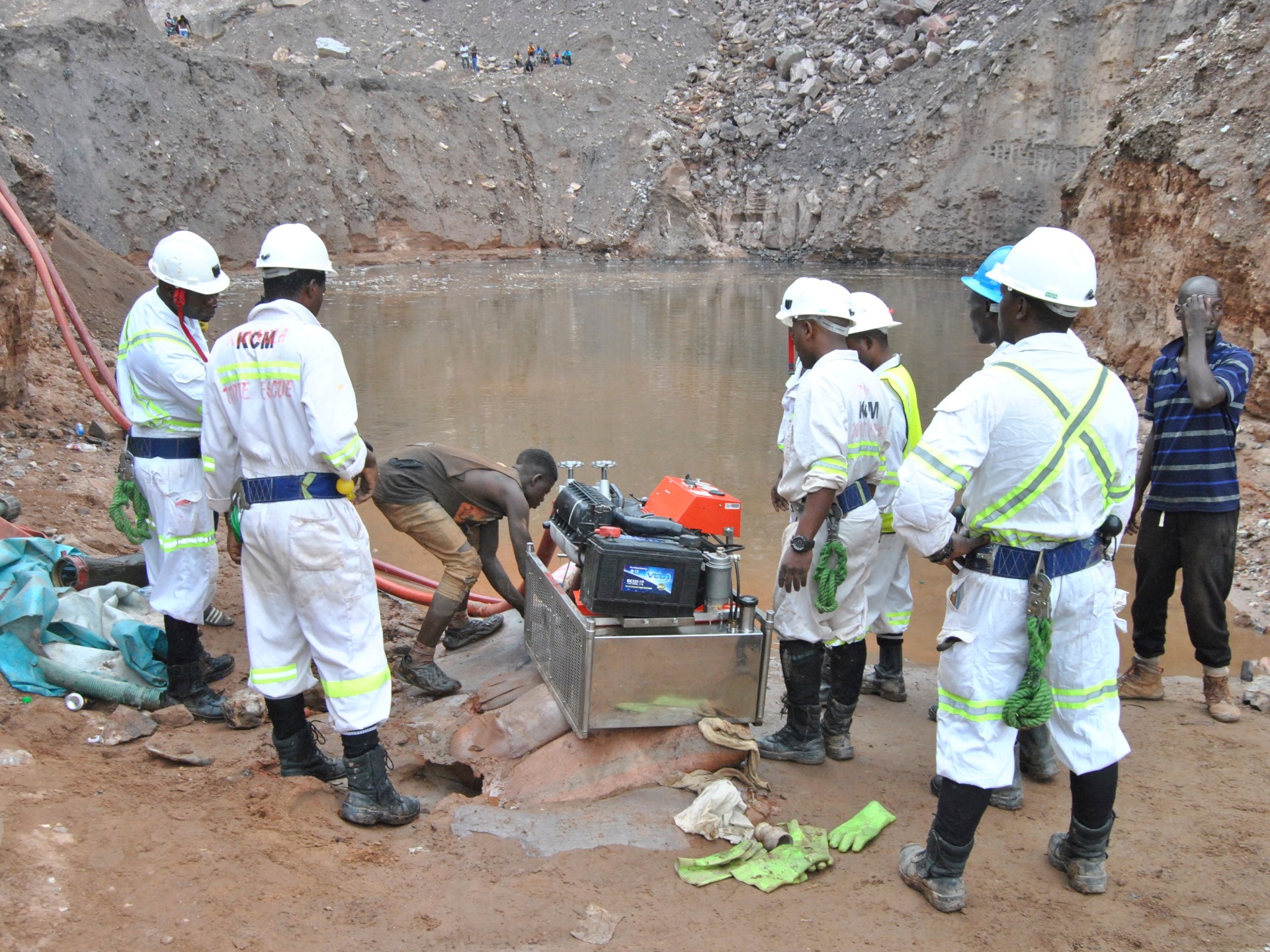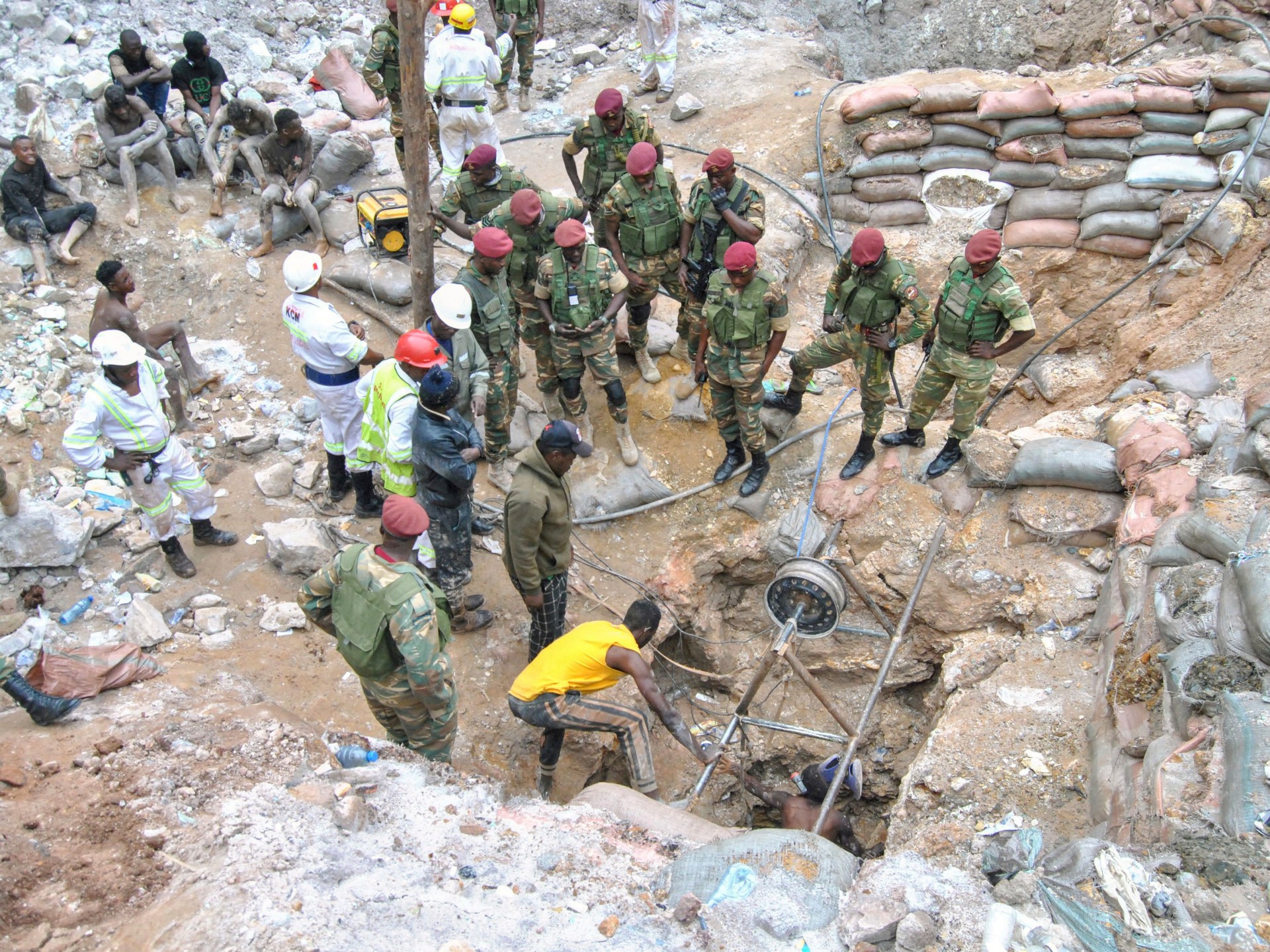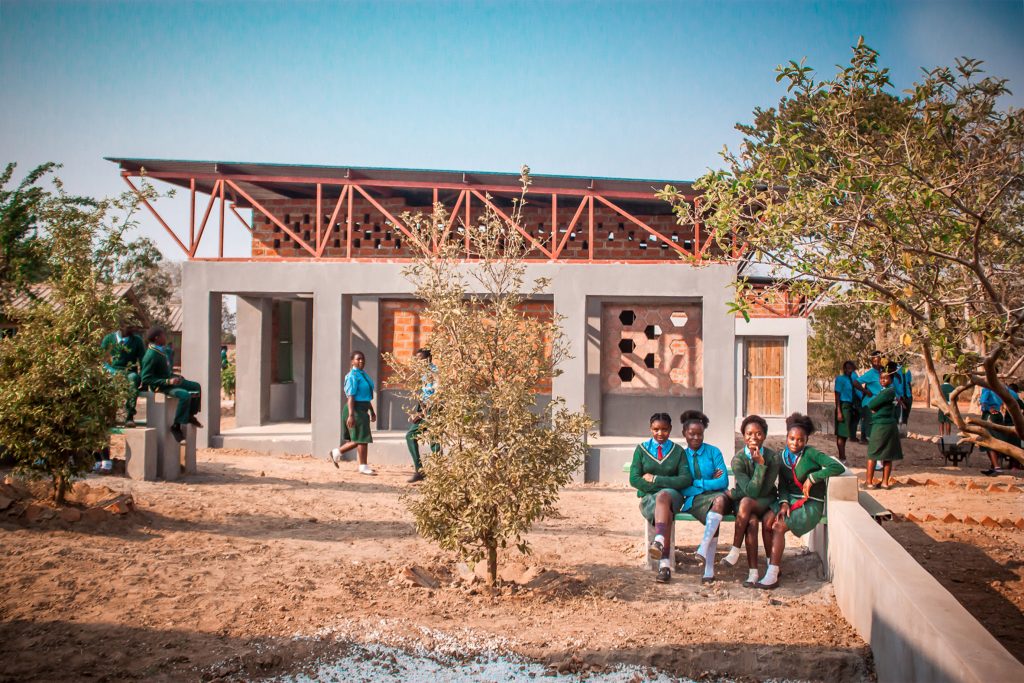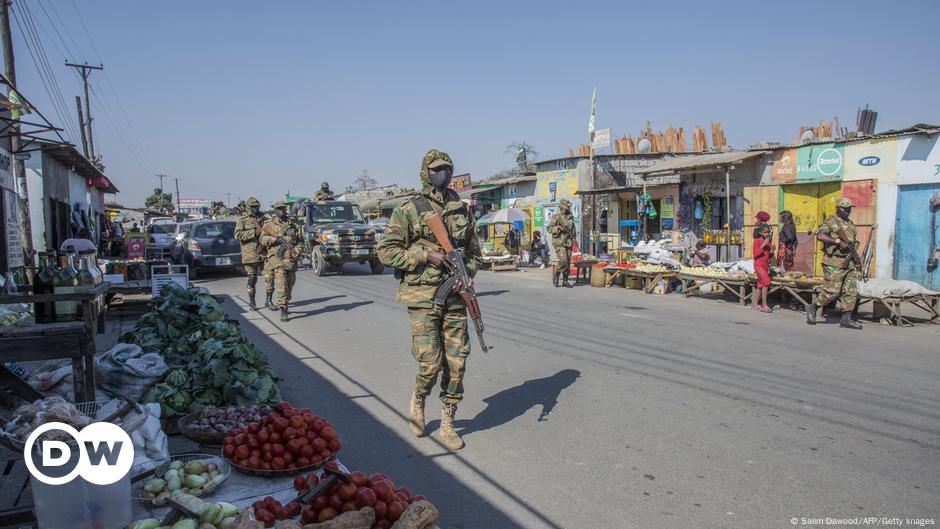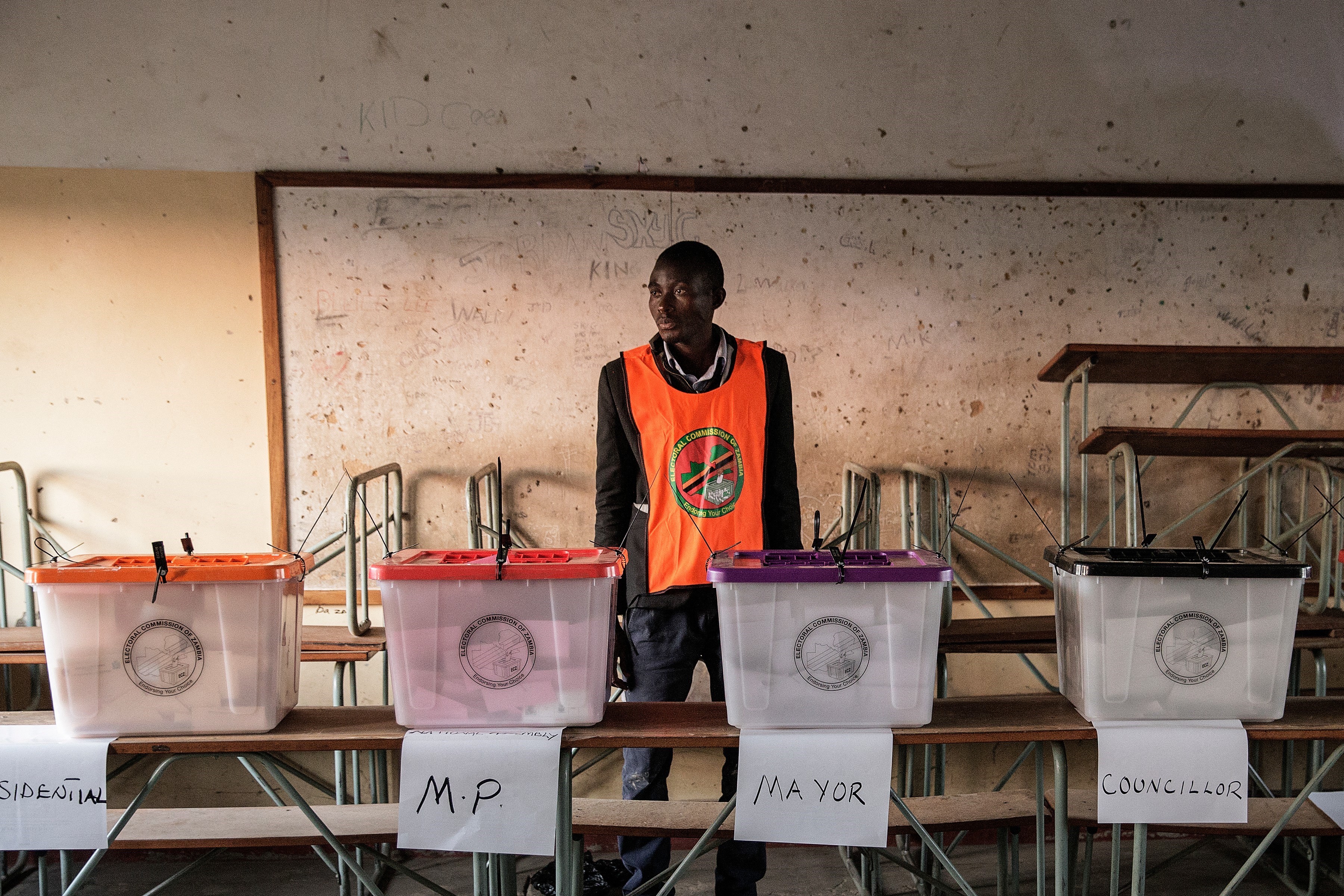Flusspferde gehören zu den gefährlichsten Großtieren Afrikas. Auch Löwen müssen sich fürchten, wenn sie das Reich der Dickhäuter durchschwimmen, zeigen Filmaufnahmen.#Flusspferde #Löwen #Verhalten #Zambia #Sambia #Biologie
Wenn das Flusspferd den Löwen jagt
#zambia


🇿🇲 Photo by Masiyaleti Mbewe.
-> https://www.masiyaletimbewe.co.uk/
#MasiyaletiMbewe #portrait #queerfuturism #afrofuturism #zambia #photo #art
14 Likes
4 Comments
The refugee football team in worn-out shoes scoring success in Zambia
The odds are stacked against them. But that’s not stopping Meheba’s refugees and their Zambian teammates from dreaming.#Features #Sports #Football #Refugees #Africa #Zambia
The refugee football team in worn-out shoes scoring success in Zambia
One person like that
First survivor pulled out of Zambia landslide as rescue mission continues
The first survivor has been pulled out alive after last Friday's landslide in Zambia that flooded a copper mine.It trapped at least 25 people who were workin...#Chingola #CopperbeltProvince #Mining #Naturaldisaster #Seselimine #Zambia #Zambiacoppermines #Zambiacoppermining #Zambialandslide #Zambiamineaccident #Zambiamines #Zambiamining #aljazeera #aljazeeraenglish #aljazeeralive #aljazeeravideo #aljazeeraEnglish #aljazeeralatest #aljazeeralive #aljazeeralivenews
First survivor pulled out of Zambia landslide as rescue mission continues
First survivor pulled out of Zambia landslide as rescue mission continues
Zambian authorities have said the yet to be identified survivor is being treated in hospital.#Mining #Africa #Zambia
First survivor pulled out of Zambia landslide as rescue mission continues
Rescue mission continues in Zambia for miners buried in mudslide
An unknown number of miners still remain trapped in the Zambian town of Chingola.#Mining #Africa #Zambia
Rescue mission continues in Zambia for miners buried in mudslide
Refugee footballers in Zambia fight for place in top league
A football team from a refugee settlement in Zambia is fighting for promotion to the country’s top division.#Newsfeed #ShowTypes #Football #Refugees #Africa #Zambia
Refugee footballers in Zambia fight for place in top league
A good read.
#China’s #loans pushing world’s poorest countries to brink of #collapse
A dozen #poor #countries are facing economic #instability and even collapse under the weight of hundreds of billions of dollars in foreign loans, much of them from the world’s biggest and most unforgiving government lender, China.
An Associated Press analysis of a dozen countries most indebted to China — including #Pakistan, #Kenya, #Zambia, #Laos and #Mongolia — found paying back that #debt is consuming an ever-greater amount of the tax revenue needed to keep schools open, provide electricity and pay for food and fuel. And it’s draining foreign currency reserves these countries use to pay interest on those loans, leaving some with just months before that money is gone.
Behind the scenes is China’s reluctance to forgive debt and its extreme secrecy about how much money it has loaned and on what terms, which has kept other major lenders from stepping in to help. On top of that is the recent discovery that borrowers have been required to put cash in hidden escrow accounts that push China to the front of the line of creditors to be paid.
Countries in AP’s analysis had as much as 50% of their foreign loans from China and most were devoting more than a third of government revenue to paying off foreign debt. Two of them, Zambia and Sri Lanka, have already gone into default, unable to make even interest payments on loans financing the construction of ports, mines and power plants.
In Pakistan, millions of textile workers have been laid off because the country has too much foreign debt and can’t afford to keep the electricity on and machines running.
In Kenya, the government has held back paychecks to thousands of civil service workers to save cash to pay foreign loans. The president’s chief economic adviser tweeted last month, “Salaries or default? Take your pick.”
Since Sri Lanka defaulted a year ago, a half-million industrial jobs have vanished, #inflation has pierced 50% and more than half the population in many parts of the country has fallen into poverty.
Experts predict that unless China begins to soften its stance on its loans to poor countries, there could be a wave of more defaults and political upheavals.
1 Comments
#Ukraine #Russia #Egypt #Uganda #Senegal #Congo #Zambia
S. Africa's president says there'll be a peace summit attended by both Zelenskyy and Putin and since Egypt seems to be an effective broker (most recently a ceasefire between Israel and Palestine (Gaza), it looks more promising than the previous bloviating from Turkey and China.
https://news.yahoo.com/putin-zelensky-host-african-leaders-200137092.html
Putin, Zelensky to host ‘African leaders peace mission,’ South Africa president says

Nigerian Explorer Discovers Lake in Leicester, UK and Challenges Colonial Narratives
In a bold move to challenge colonial narratives that have long claimed the discovery of African landmarks, a Nigerian man living in the United Kingdom has discovered a new lake in Leicester, East Midlands, and named it Iyi Ojemba.
Mazi Uba Acho, a native of Igbo Naton in West Africa, posted on #Facebook about his discovery, highlighting the absurdity of the colonialist mindset that sought to claim discovery of places already known to local communities. He cited examples of Mungo Park's claim to discovering the River #Niger in #Nigeria and David Livingstone's claim to discovering the #Zambezi River and Victoria Falls in #Zambia and #Zimbabwe.
By discovering and naming the new lake in Leicester, Mazi Uba Acho is taking a stand against the erasure of African knowledge and history. He urges others to put it on record, teach it to their children, and take pride in their heritage.
This act of reverse colonialism serves as a powerful reminder that knowledge and discovery are not exclusive to any one race or culture, and that we must celebrate and value the contributions of all communities. It is a call to action for Africans to take pride in their history, knowledge, and heritage, and to challenge the narratives that seek to erase them.
#unitedstatesofafrica #Colonialism #FunnyAndSad #Africa #England #Europe #Explorers
3 Likes
3 Comments
1 Shares

Masiyaleti Mbewe
🇿🇲 . https://www.masiyaleti.com/

#MasiyaletiMbewe #queerfuturism #afrofuturism #Zambia #photo #art
12 Likes
1 Shares

Amnesty International : #Zambia has become the 25th country in sub-Saharan #Africa to abolish the #DeathPenalty for all crimes.
This is a good and progressive move that shows the country’s commitment to protecting the right to life.
#HumanRights #Politics
3 Likes
Todesgefahr auf den Migrationsrouten im südlichen Afrika | DW | 15.12.2022
Nicht nur die Flucht übers Mittelmeer Richtung Europa, sondern auch die Migrationsrouten Richtung Südafrika werden immer öfter zu Todesfallen für Migranten. Experten und Menschenrechtsorganisationen schlagen Alarm.#Migration #Zambia #Malawi #Mozambique #southafrica #migrants
Todesgefahr auf den Migrationsrouten im südlichen Afrika | DW | 15.12.2022
Caukin Studio adds classrooms with "raw" aesthetic to school in Zambia
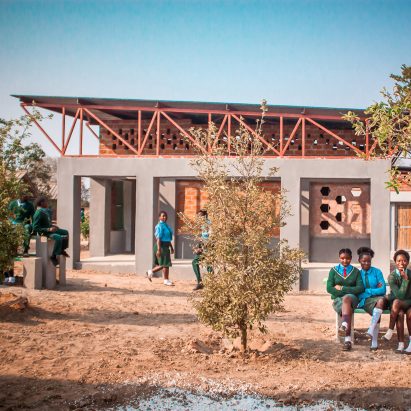
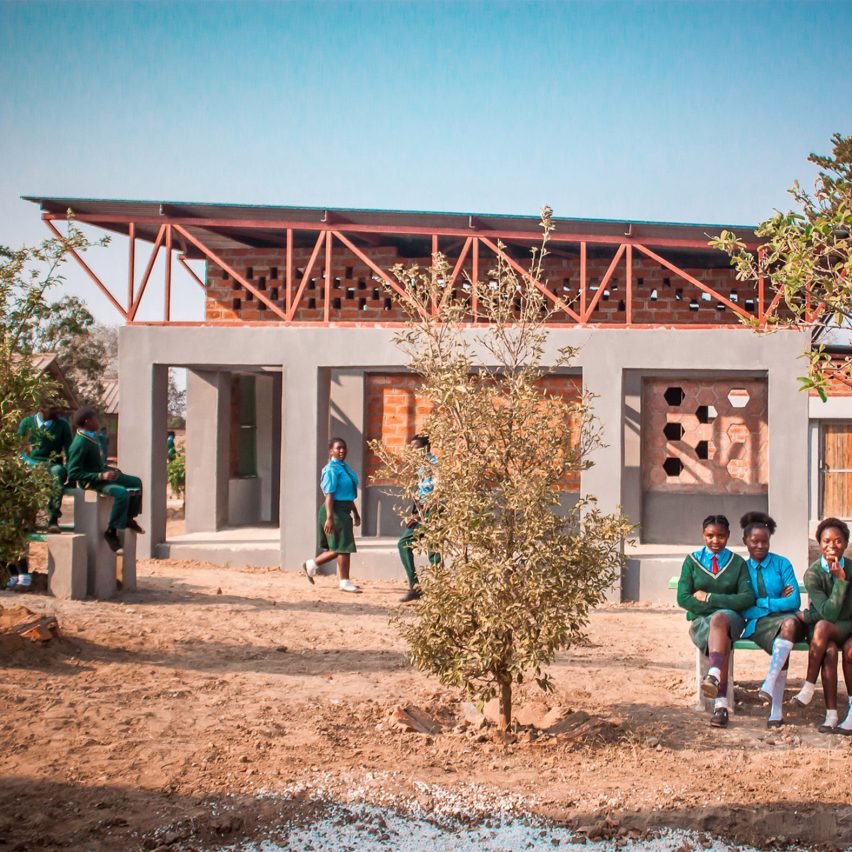
Architecture practice Caukin Studio has added four classrooms built from locally sourced materials to the Evergreen School in Zambia.
Designed for charity Mothers Of Africa, the buildings were created to reduce classroom sizes at the school in the Chongwe region of Zambia by adding additional teaching space.
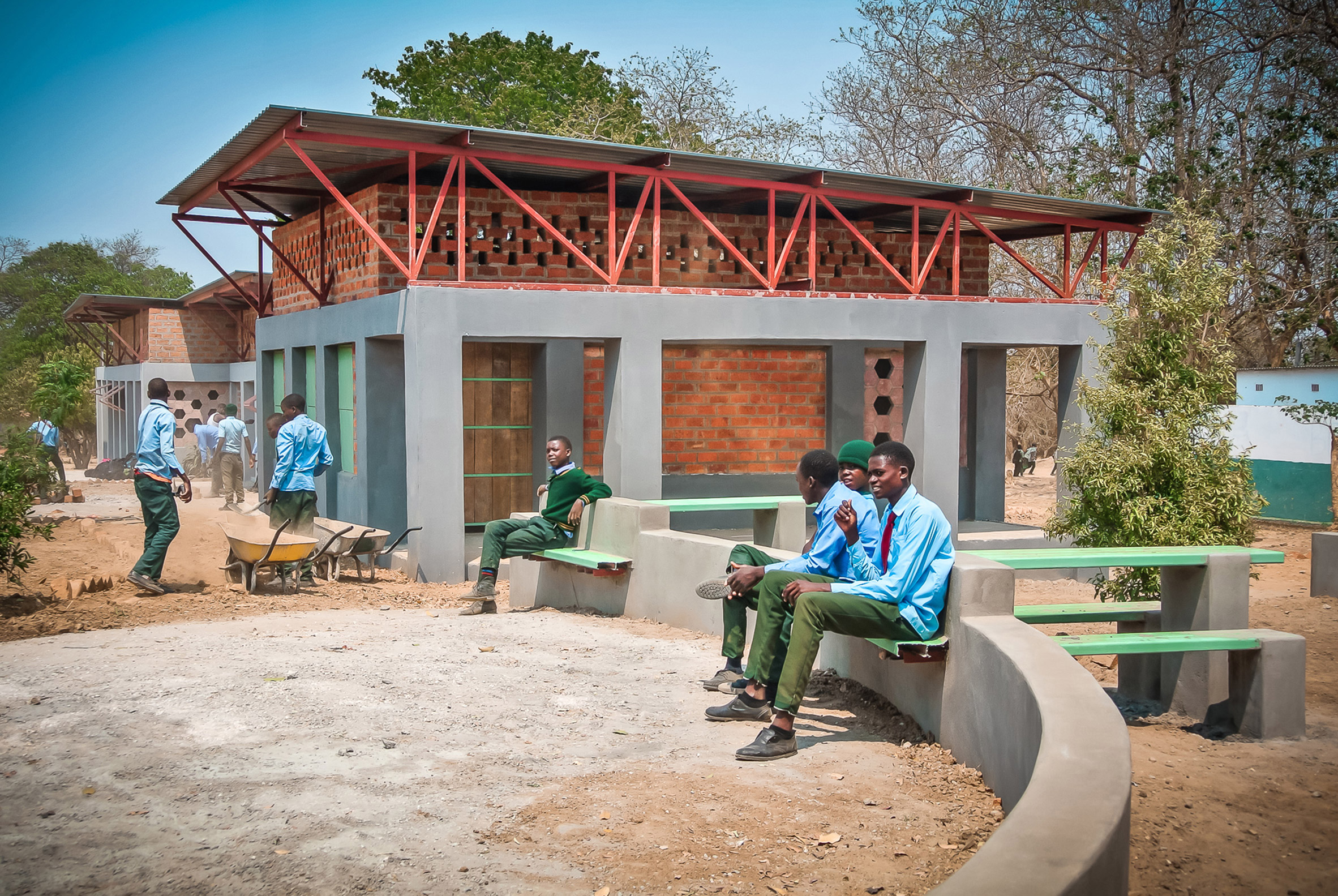 Caukin Studio added four classrooms and a teachers' office to the rural school
Caukin Studio added four classrooms and a teachers' office to the rural school
"The concept of the school design was to create a fluid, open and adaptable learning environment for the students at Evergreen School," said Caukin Studio co-founder Josh Peasley.
"With classrooms that individually maintain strong internal to external links via natural lighting and ventilation but are also comprised of paired sets."
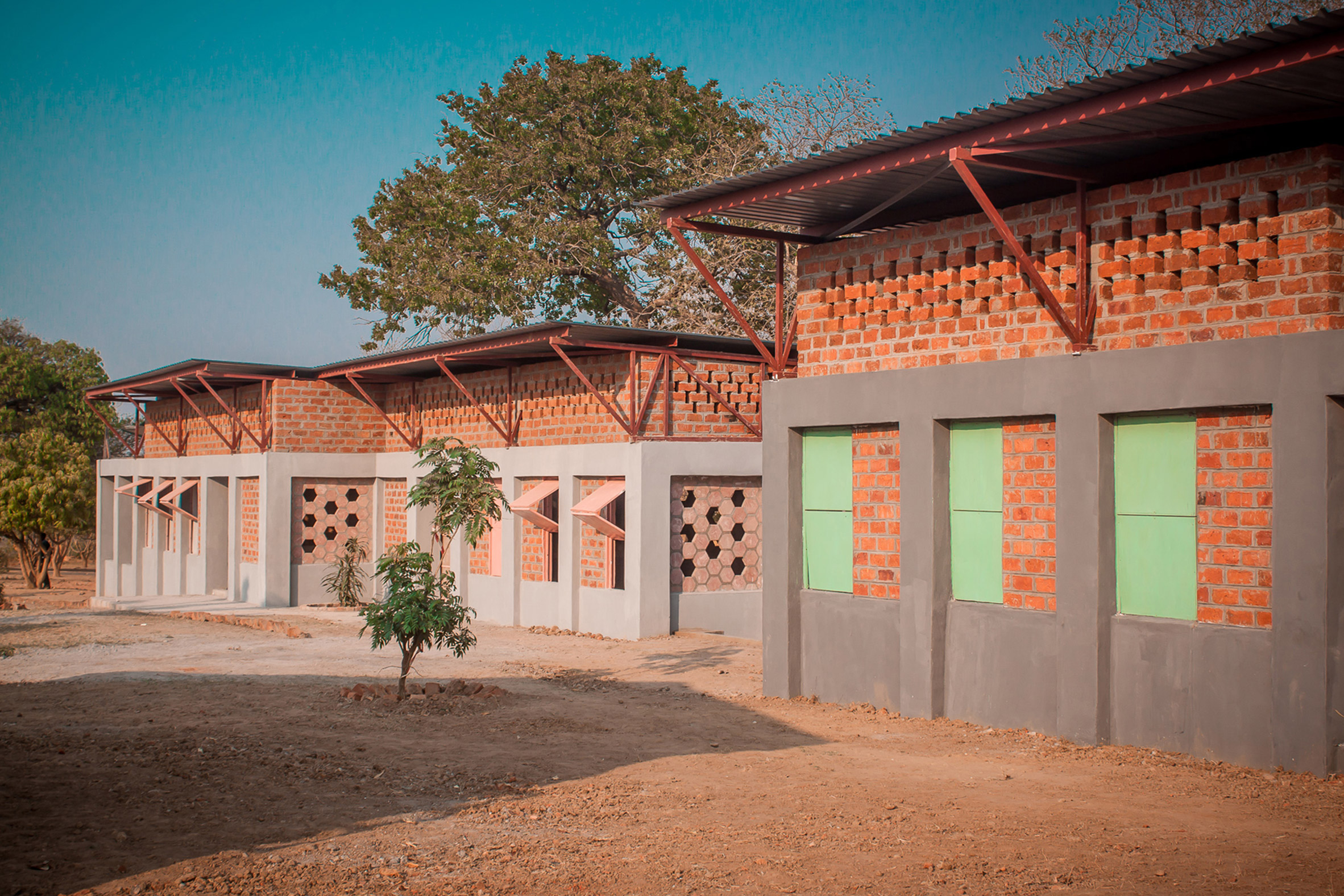 A pair of classrooms (left) and the teachers' office (right) enclose an outdoor area
A pair of classrooms (left) and the teachers' office (right) enclose an outdoor area
The studio added two blocks, each with two classrooms, along with a teachers' office to the school. They were positioned to enclose an outdoor space.
"These offset pairs of class spaces also aid the dynamic intent of the wider school, having students able to pass in and around the school freely between lessons through external corridors and walkways," said Peasley.
"As an intervention, the project looks to encircle the main, linear, existing classroom blocks and create a central focal point for outdoor learning and assembly points."
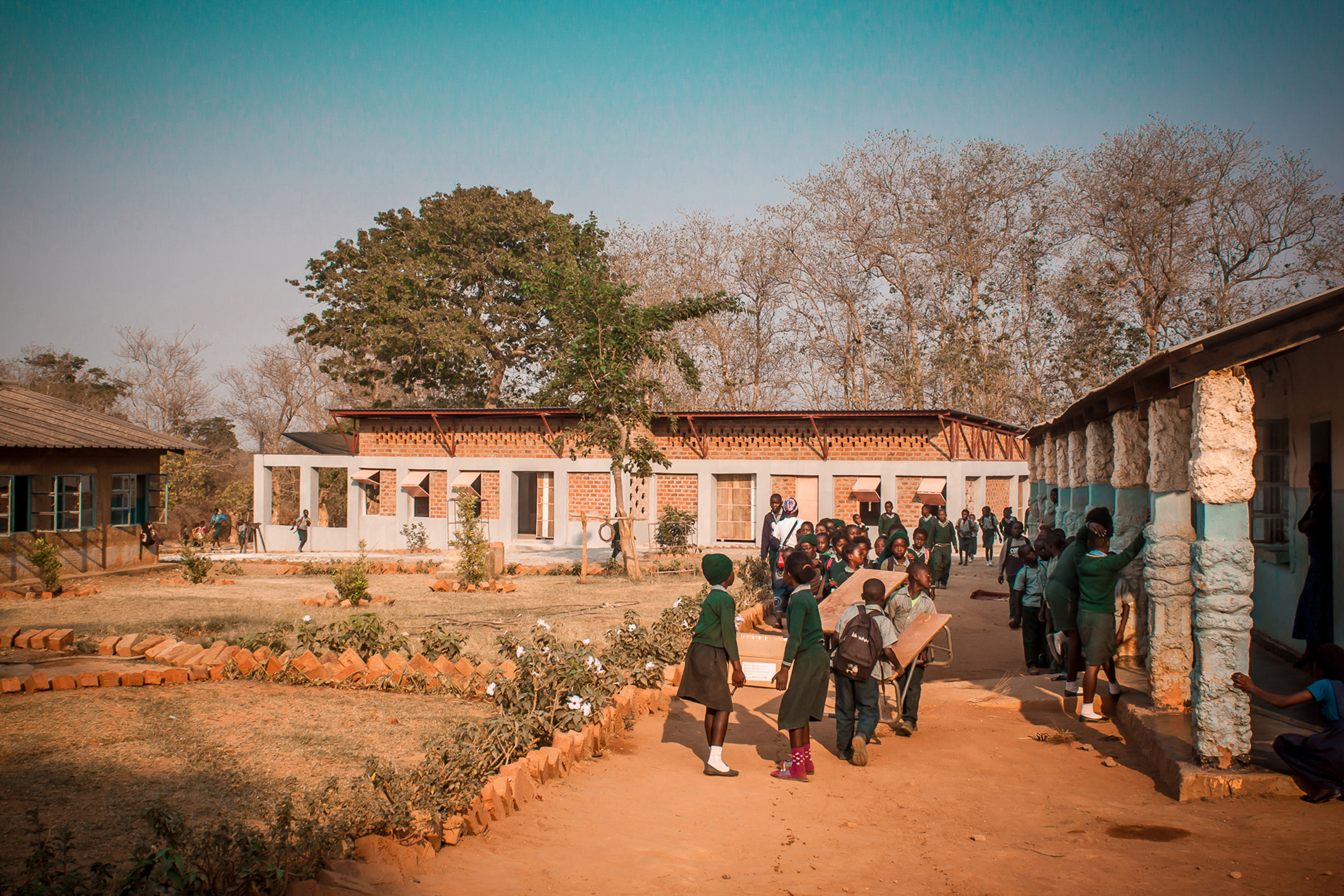 The new classrooms stand near the existing school
The new classrooms stand near the existing school
Caukin Studio designed the building's structure so that it could be entirely constructed from locally sourced materials. The team amended the design as construction took place to incorporate available materials.
"The choice of materials was informed entirely by what could be obtained locally," explained Peasley.
"Naturally, these materials then complement the existing skillset of local people and are representative of the area and of the people," he continued.
"Many of the finer design details were refined on site, through collaborative processes, with the local team – with only the structural design set in stone before construction started," he continued. "This type of approach enabled the design to be responsive to the material availability."
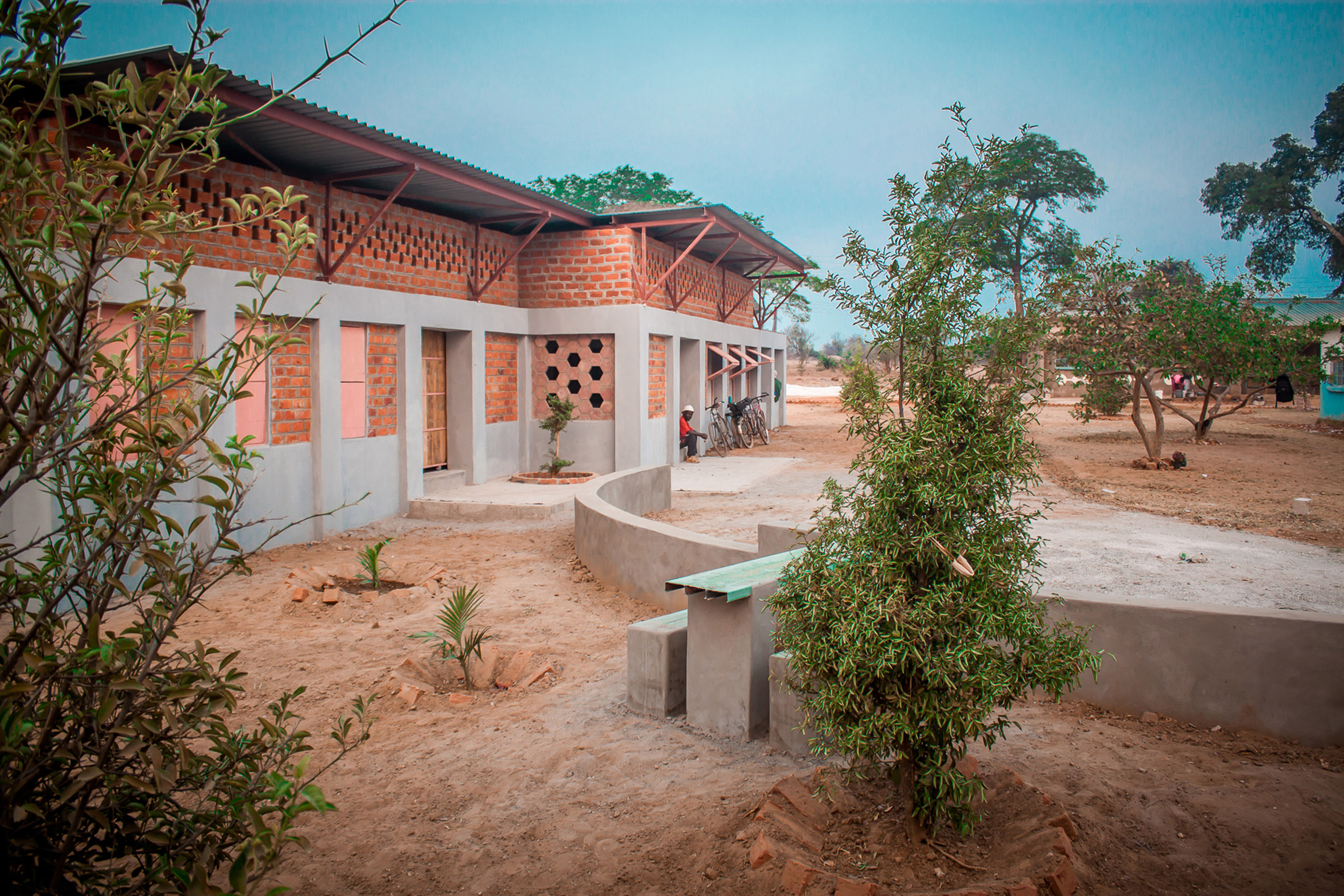 Materials to build the classrooms was sourced locally
Materials to build the classrooms was sourced locally
Concrete blocks were used to form the buildings' structure, which was infilled with locally made bricks and hexagonal tiles. Windows were covered with steel shutters that can be locked when the school is closed.
Above the classrooms, the steel roof sits on steel trusses to allow air into the buildings. Throughout the design, Caukin Studio left the majority of raw materials exposed.
[ 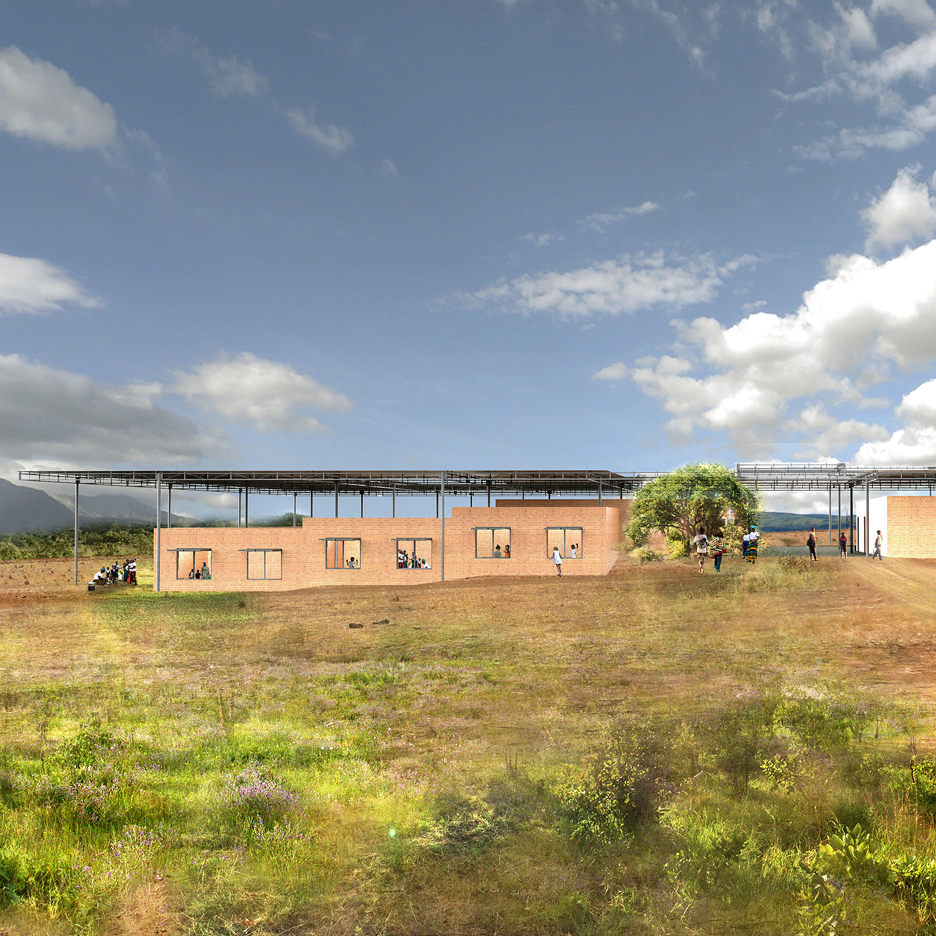
Read:
Annabelle Selldorf designs new primary school for rural Zambia
"We believe that there can be beauty to materials in their raw, exposed state and so aim to bring this out as much as possible," said Peasley.
"Often materials like the exposed clay earth bricks in the scheme have the perception locally of being a cheap option or 'poor person's' material so are avoided generally," he continued.
"However, by careful attention to detail on site, including these materials in a designed capacity can add perceived value through innovation and we hope that long term this aids in changing perception."
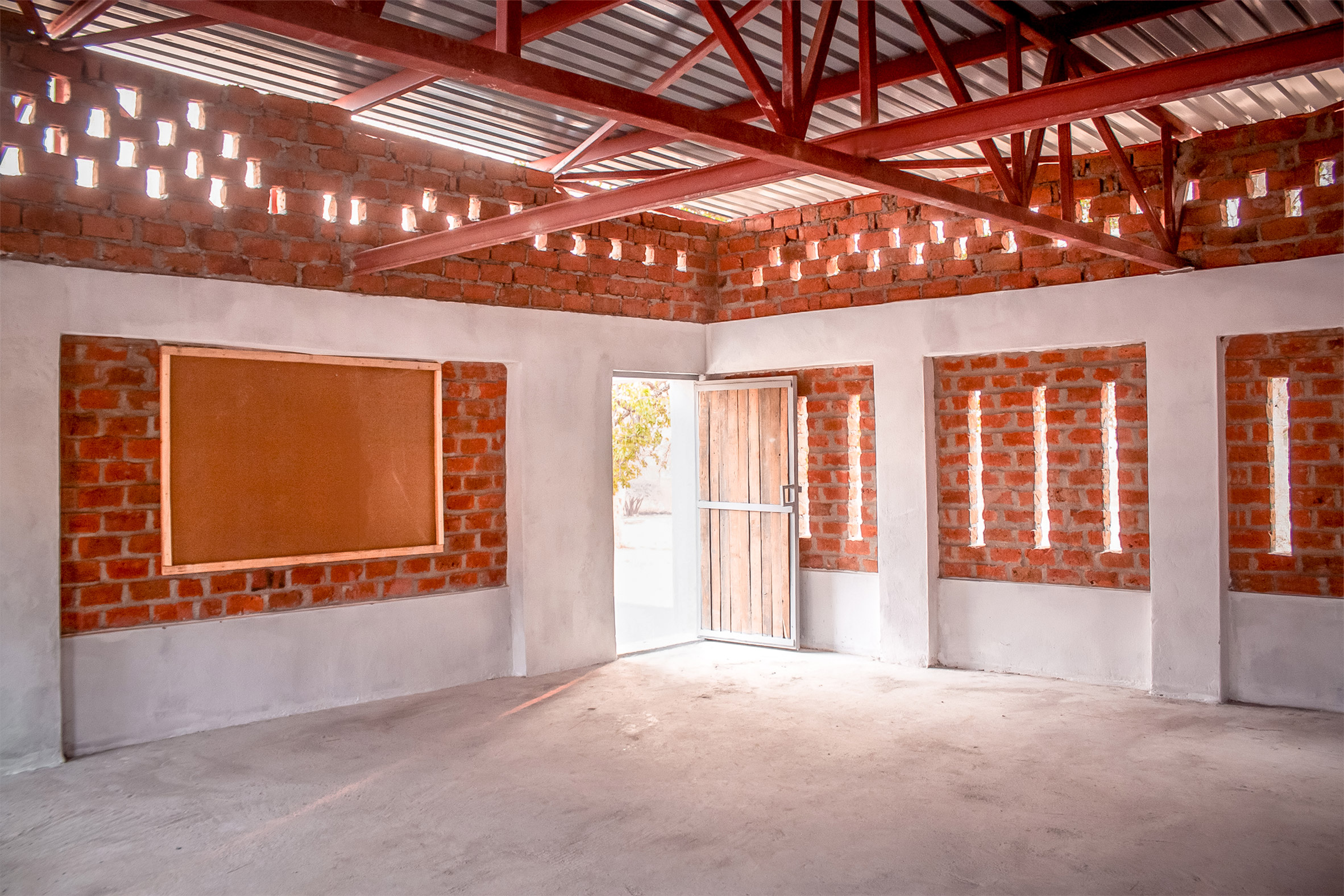 The materials are exposed throughout
The materials are exposed throughout
The final aesthetic of the classrooms was the result of collaboration between the architecture studio and locally based construction force.
"The international team brought design expertise whilst the local team brought an in depth understanding of construction methodologies, local materials and the culture/context within which the project is situated," added Peasley.
"It was a combination of these things, alongside comments on didactic material exposure above, that gave rise to the project's ultimate aesthetic – with a large majority of the details being designed on site."
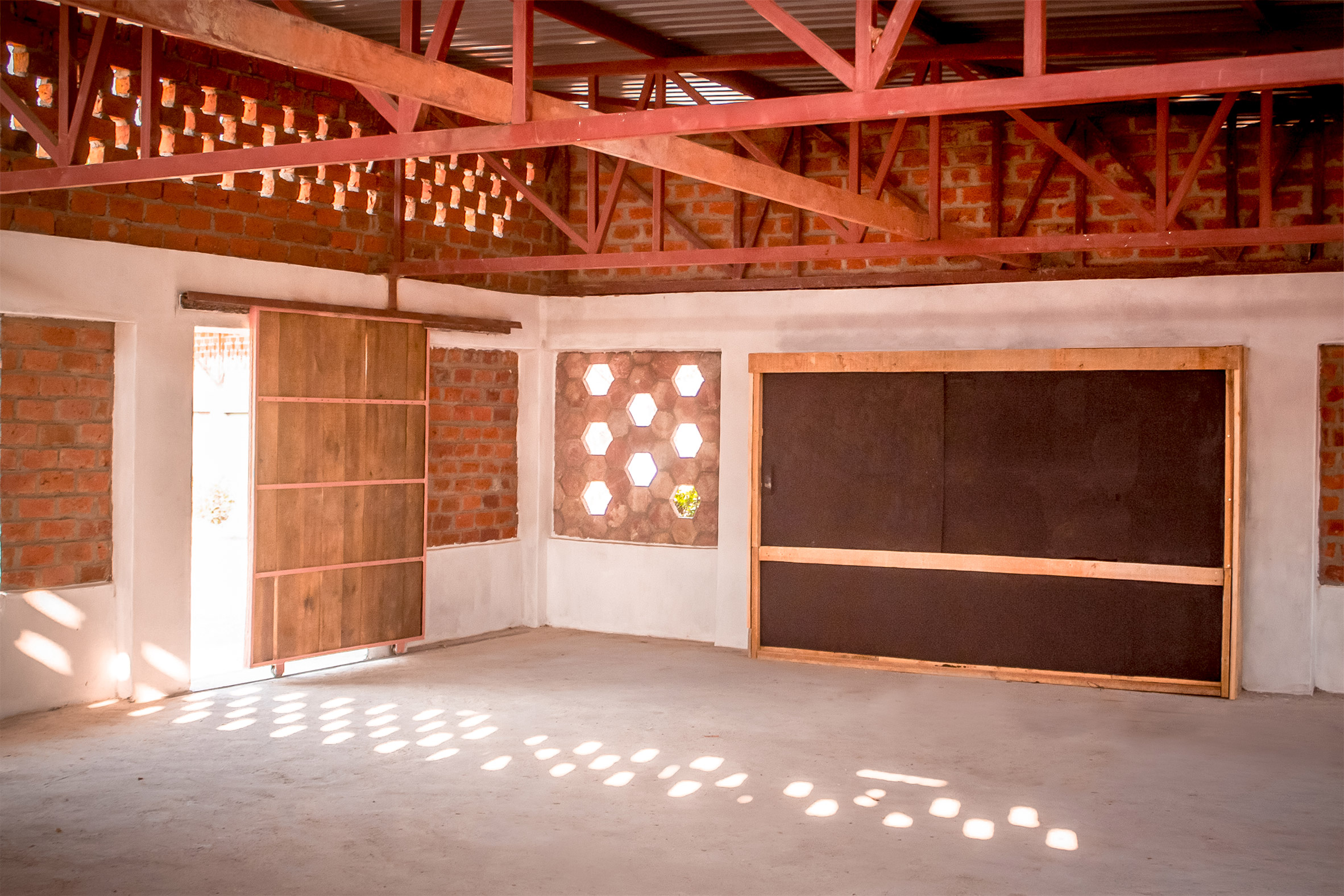 The classrooms were topped with steel roofs
The classrooms were topped with steel roofs
Mothers of Africa, which aims to improve maternal health and reducing maternal mortality in Africa, was keen to use the project as learning opportunity and the classrooms were constructed by a gender-balanced local team.
"Through leading by example and utilising a balanced workforce split of male and female labour, the project set a visible precedent to the kids on site – with a number of the female students at the school going on to study construction in local technical colleges," said Peasley.
"One of the apprentice welders who fabricated the steel trusses and windows on site, went on to set up his own business selling the hatch window systems that were specified on the school."
Also in Zambia, Selldorf Architects designed a school in Mwabindo Village in the south of the country for charity 14+ Foundation.
The photography is courtesy of Caulking Studio.
The post Caukin Studio adds classrooms with "raw" aesthetic to school in Zambia appeared first on Dezeen.
#all #architecture #education #schools #zambia #caukinstudio
Times of #Zambia | Veep calls for speedy implementation of cyber laws ⚓ https://www.times.co.zm/?p=113576 ䷉ #africa
● NEWS ● #OONI #Censorship ☞ #Zambia: Social media blocked amid 2021 general elections https://ooni.org/post/2021-zambia-social-media-blocks-amid-elections/
● NEWS ● #TheVerge #Politics ☞ WhatsApp, Twitter, and #Facebook are reportedly blocked in #Zambia during its presidential election https://www.theverge.com/2021/8/12/22621875/whatsapp-twitter-facebook-blocked-zambia-presidential-election
● NEWS ● #LusakaZM #Censorship ☞ #Zambia may shut down [Internet] during voting period if Zambians fail to correctly use cyber space-Malupenga https://www.lusakatimes.com/2021/08/10/government-may-shut-down-internet-during-voting-period-malupenga/
● NEWS ● #DeutscheWelle #Zambia ☞ Economy dominates Zambia's general election https://www.dw.com/en/economy-dominates-zambias-general-election/a-58830194
● NEWS ● #CPJ ☞ #Zambia radio station transmitter damaged in arson attack https://cpj.org/2021/08/zambian-radio-station-transmitter-damaged-in-arson-attack/


